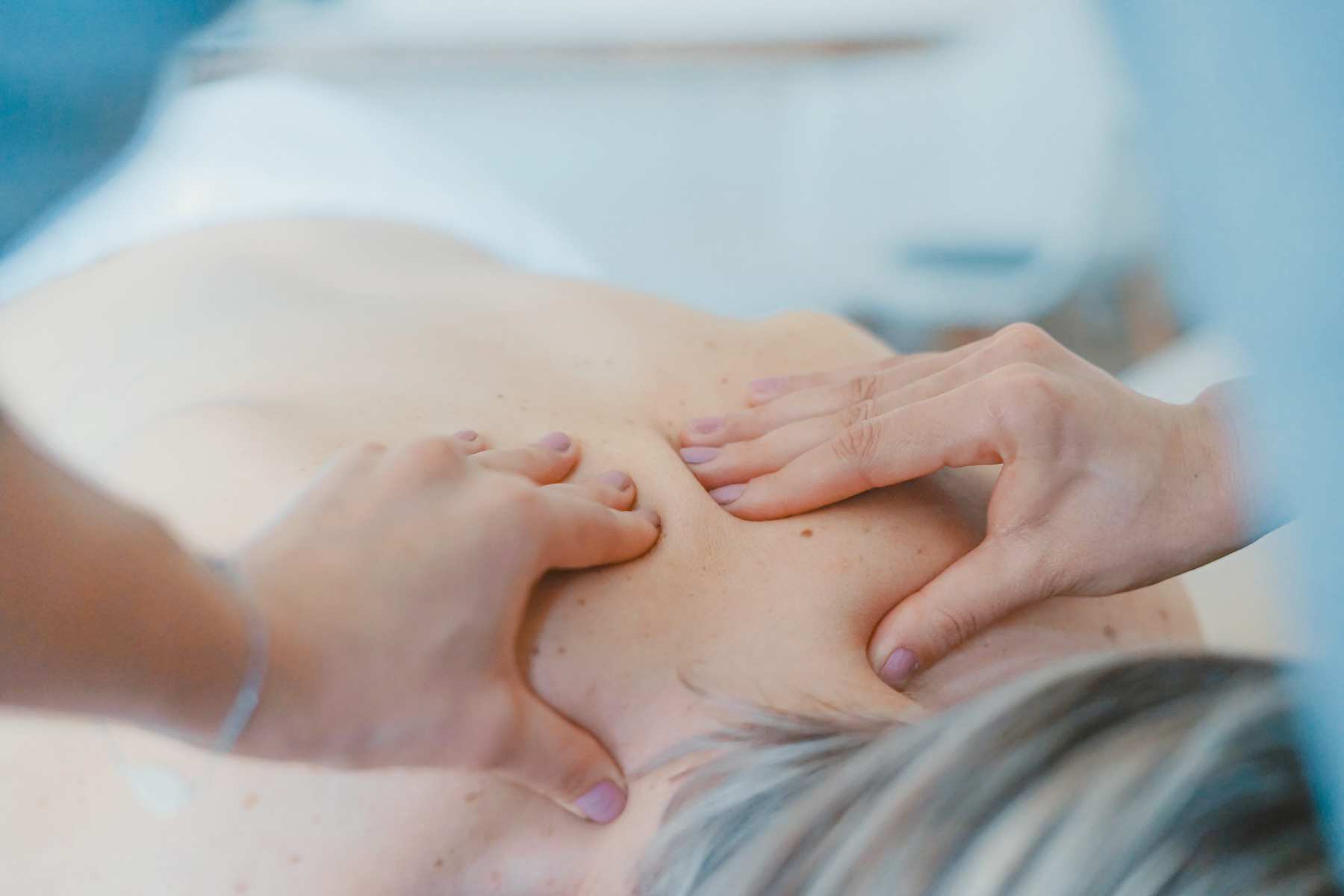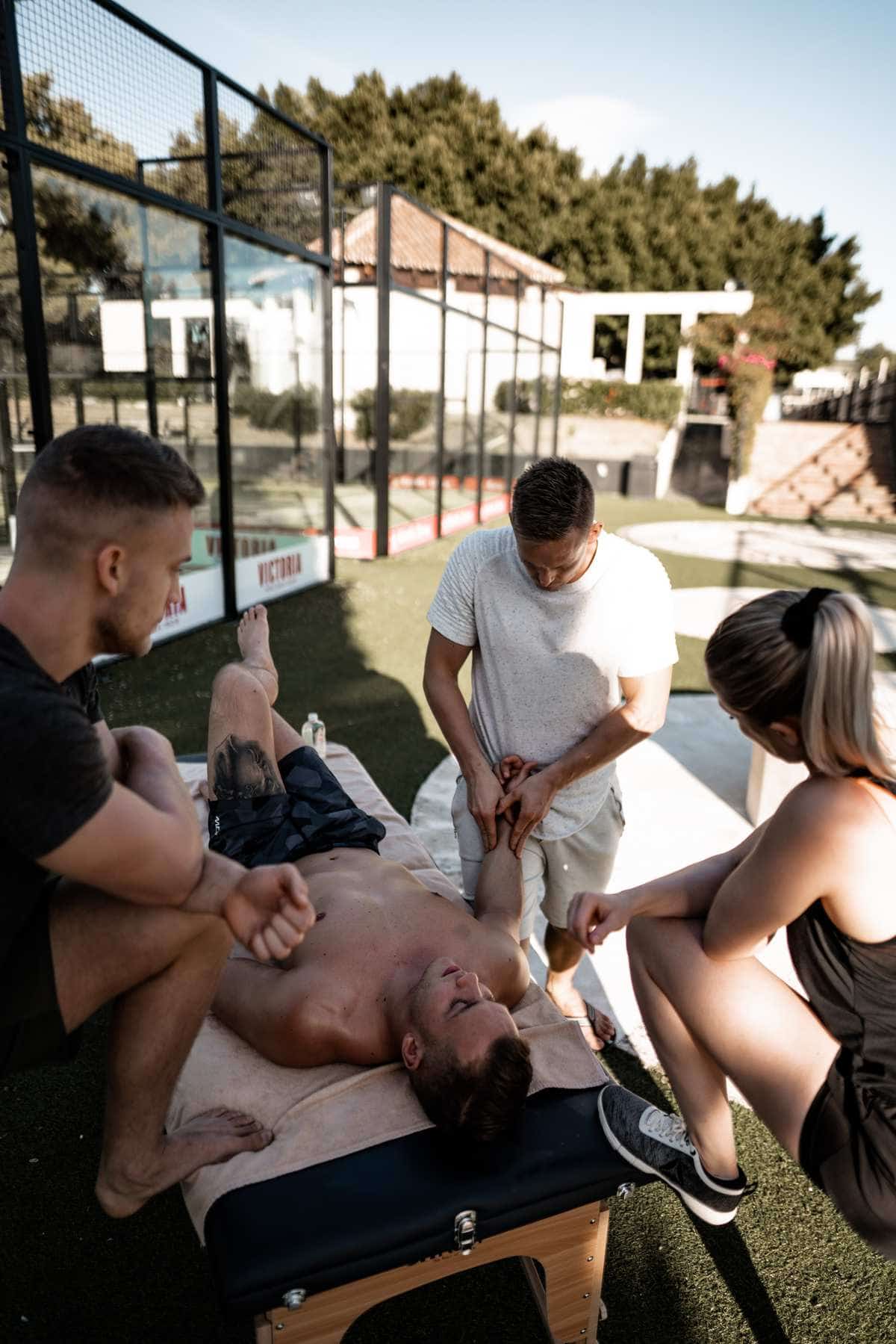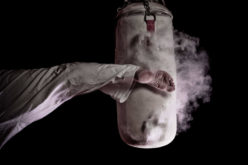Sports myotherapy is a treatment that helps athletes with complaints related to the myofascial, surrounding the muscles and organs. Because it is so soft, it can be prone to damage or stiffness, which causes pain. Myofascial pain comes from two places:
- Pain in the skeletal system (like your joints) or from the connective tissues that lie under your myofascial
- Pain from the myofascial (from inflamed or damaged tissue)
Sports myotherapy includes a range of treatments to treat these different types of pain. These include cupping, massage, dry needling, and myofascial release.
Is sports myotherapy the same as massage?
No, sports myotherapy offers massage as only one of its many treatments. With some of its other treatments including cupping, massage, dry needling, and myofascial release. Regular massage works for general fatigue, but may not be advanced enough to provide relief for myofascial tightness. In such cases, remedial myotherapy or sports myotherapy may be required.

In addition, the goal of massage is to relax the client and induce a sense of well-being. Conversely, sports myotherapy is aimed at reducing pain by releasing tightness and enhancing blood flow.
Sports myotherapy for athletes
Anyone who participates in sports lifts weights, or has a rigorous workout schedule will benefit from sports myotherapy. Massage and myotherapy are both important forms of pre- and post-event care for athletes. Both also being good systems to preserve and improve the condition of body and muscle health.

For those who are about to participate in a sporting event such as a marathon or weight lifting contest, myotherapy may help to open up the flow of energy and improve flexibility, strength, and endurance. At this time, treatment is short and targeted so that the training is not undone.
After an event, remedial myotherapy can help relieve stress, release fatigued muscles, and boost recovery time.
Sports myotherapy for non-athletes
For those suffering from chronic pain caused by lifestyle or health conditions, sports myotherapy can be an effective option.
Tightness in the myofascial can pull your limbs into incorrect postures, adding strain to the weight-bearing side of your body. Old or new injuries may affect your mobility. Weaknesses or inadequacy in your muscles may cause you to redistribute weight incorrectly. All of these can cause pain and stiffness, but may not show up in the area in which the issue is. For example, a weakened core can cause lower back pain and stiffness, as well as pain shooting through the legs and hips.
A myotherapist is qualified to diagnose the condition and conduct assessments to arrive at an accurate diagnosis of the pain. This ensures that you’re getting the appropriate treatment for the cause of your discomfort.
Sports myotherapy can help with a few conditions that anyone, whether athlete or not, could suffer from at some point:
1. Repetitive Stress Injuries (RSI)
For someone who is training extensively or repeats the same physical movements daily, Repetitive Stress Injuries are a very real risk. The soft tissues in those joints may become inflamed, becoming stiff and brittle over time, causing pain in related body parts. The most common complaints are tennis elbow or Carpal Tunnel Syndrome. The pain usually starts mild, but can get more intense very quickly. Remedial myotherapy for RSI involves massage, cupping, or dry needling to dissipate the stiffness and reduce pain.
2. Lifestyle-related pain
The most common cause of lifestyle-related pain is a sedentary lifestyle or a desk job that causes back, neck and shoulder pain. However, someone in a physically intensive job that involves lifting heavy objects or bending may also feel pain related to their daily activity. Sports myotherapy can help with the associated pain and stiffness through TENS (Transcutaneous Electrical Nerve Stimulation) Therapy, or massage and stretching.
3. Misalignment of joints or spine correction
One of the common causes of migraines is problems in the spine or posture. By correcting the alignment of the body, myotherapy improves the skeletal structure over time, allowing it to become stronger and function in the right way. This can have a serious impact on the frequency and intensity of migraines. Myofascial release, stretching, physiotherapy, and massage can help with this process, but it usually takes time to reset the joint and improve posture.
4. Chronic pain caused by conditions like fibromyalgia or arthritis
Another one of the benefits of myotherapy for non-athletes, especially for someone diagnosed with fibromyalgia or arthritis, sports myotherapy can greatly reduce and manage chronic pain. Therapies like myofascial release, dry needling, and cupping can help with improving mobility and maintaining strength.
5. Stress-related problems like migraines
With stress, the myofascial and other soft tissues tend to get stiff, creating the feeling of ‘knots in your neck’. The knots can impact the flow of oxygen and blood in your body, creating blockages of energy and affecting your health over time. With sports myotherapy treatments like dry needling or massage, the fascia is released and loosened, boosting circulation and letting feel-good endorphins rush through your body. That’s why you might leave a spa session feeling light or as if you’re walking on air.
Sports myotherapy was designed for athletes, but it can have great benefits for those who are not athletes too. As an evidence-based form of therapy, it is a more effective treatment that can also be targeted right at the root of the problem.
If you’re looking for sports myotherapy near you, Avaana can help you get in touch with the right professional.



